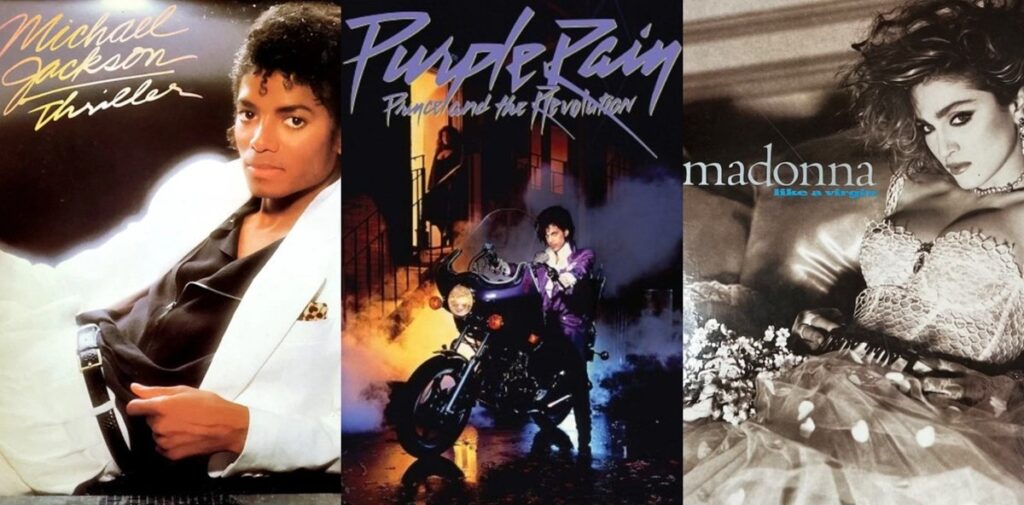What was the greatest decade in pop music? Well, we think that’s easily the ’60s. Motown, the Beatles, and psychedelic rock, are all game-changing moments in popular music. But the greatest single year in pop music history? We think that award goes to 1984. Forty years later, the music of that year, and the artists who created it, still resonate. George Orwell predicted 1984 would be a totalitarian dystopia, but he never predicted it would become a pop music paradise. Here’s why 1984 remains the GOAT of pop music years.
Pop Music Royalty Take Their Thrones
The ’80s musical ruling royals—the King of Pop, the Queen of Pop, and the Prince of Pop—defined the pop music of the decade. And yes, we’re referring to Michael Jackson, Madonna, and Prince. But their true reign began in 1984, although the warning shots were fired the previous year. In 1983, Jackson’s Thriller spawned 5 top ten hits, including two number-ones. It was well on its way to becoming the highest-selling album of all time. Madonna’s debut album debuted in the summer of ’83, but had little traction, until December of that year, with the release of her single, “Holiday.” Meanwhile, after years as a critical darling with little radio love, Prince broke through (thanks largely to MTV) with his album 1999. This album finished as the fifth highest-selling album of the year.
In December of ’83, Michael Jackson released the final video from Thriller, a horror/dance epic based on the title track. This video, according to many, remains the single greatest music video ever made to this day. But in 1984, this trio, all born in the Midwest in the summer of 1958, truly began their rule. In early ’84, “Thriller” played on a loop on MTV. Jackson won eight Grammy awards for Thriller, and made headlines for an accident suffered for filming a Pepsi commercial. “Thriller” became his last top 5 single from that album in 1984, and his Victory Tour with his brothers broke records. Even a song that only featured MJ in the chorus, Rockwell’s “Somebody’s Watching Me,” became a megahit based mainly on Jackson’s fleeting presence. And MJ merch, from dolls to stickers to t-shirts, was everywhere that year.

Meanwhile, Madonna began 1984 by declaring her intentions to “rule the world” on American Bandstand. She made good on that promise, as ’84 saw her score three top-ten hits, including “Like a Virgin” which spent 5 weeks at #1. Her controversial performance of the song on the first-ever VMAs solidified her as a pop icon. Prince followed up by dropping Purple Rain, both the album and movie, on an unsuspecting world. Both were massive, making him a megastar, earning him 4 top-ten hits. All three artists would spend the next decade producing one hit after another, rarely taking more than a year off from producing hit songs. They were beyond prolific. To this day, just about every musician tries to emulate one or all of their careers. But few have even come close to achieving their levels of influence, and 1984 was the year they claimed their respective thrones.
The Second British Invasion Hits Its Peak
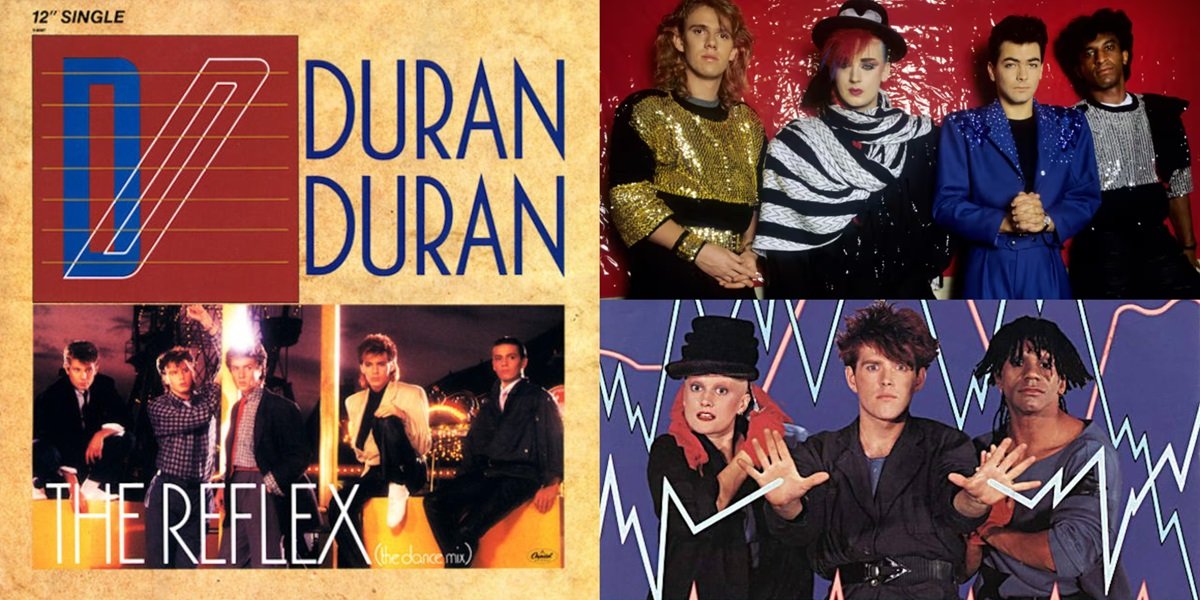
In the early ‘80s, the “Disco Sucks!” backlash had all but erased the genre from the American airwaves. (More on that in a moment). As the decade began, most hits came from mainly white male rockers, or easy-listening tunes your mom and dad liked. Then, a little thing called MTV happened. And suddenly, the new channel needed music videos. Yet, most American artists didn’t have any yet. But U.K. artists did, and so a new British Invasion began. By 1983, David Bowie ruled mainstream radio more than ever, and New Wave acts like the Human League, New Order, and Adam Ant made a splash in America. And with their wild hair, makeup, and electronic beats, they changed pop music.
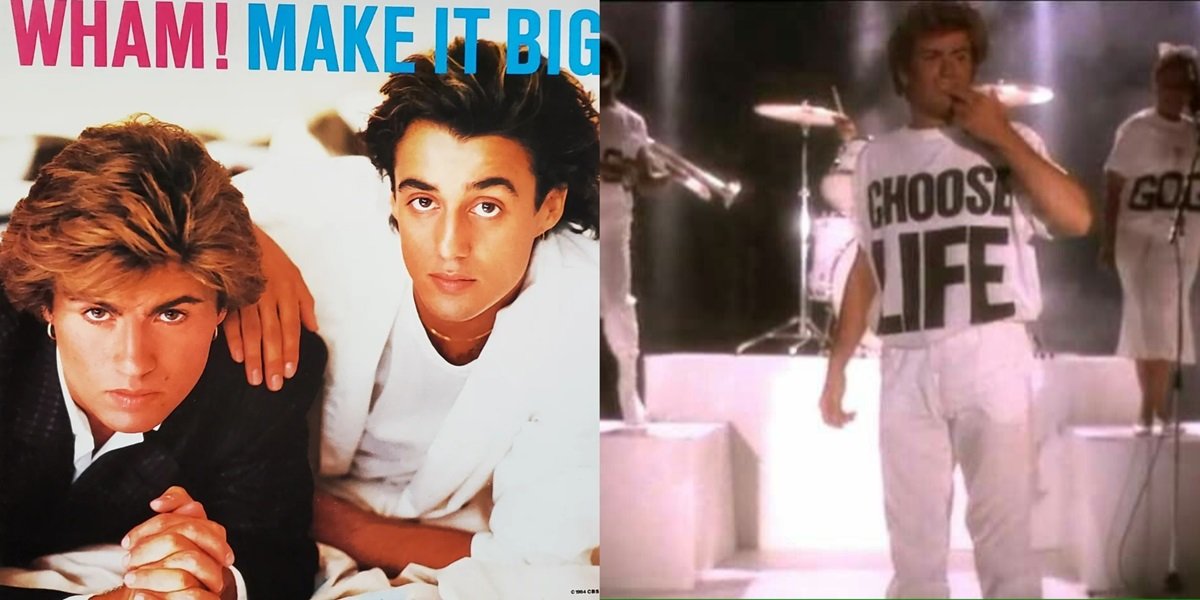
In ’84, the New Wave British musical acts infused the charts like never before. Culture Club, Duran Duran, the Eurythmics, Thompson Twins, and others all scored multiple hits that year on American radio. More alternative-style U.K. acts like Depeche Mode and the Smiths started gaining fans on college radio. And then, there was Wham. The duo of George Michael and Andrew Ridgeley were already huge in the UK., but with their second album Make It Big, they aimed to conquer America. And did they ever, as starting with “Wake Me Up Before You Go-Go,” they tallied up four top 5 hits in ’84, including a song that we still hear every Christmas. Speaking of Christmas, the biggest U.K. artists came together as Band Aid, releasing a holiday-themed charity single, “Do They Know It’s Christmas?,” that we also still hear every year when December arrives. Whether we want to or not.
Tina Turner Stages the Ultimate Comeback
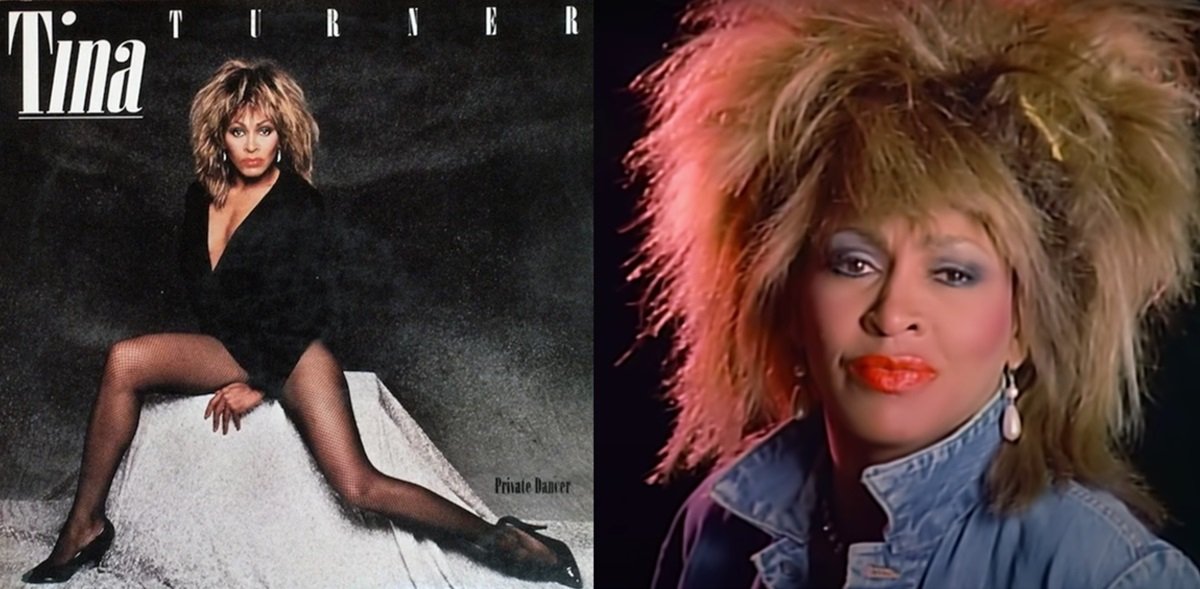
In the 1960s and ‘70s, Tina Turner was one half of the Ike and Tina Turner Revue, belting out hits and performing sold-out shows across the nation. But after years of suffering physical abuse at the hands of her husband and musical partner, she split off from Ike. And it left her life and career in shambles. She was forced to perform on every cheesy variety hour on TV, and lounge acts in Las Vegas. All just to make ends meet. But in 1984, she teamed up with Australian producer Roger Davies. He convinced Tina that she could make a comeback in this new MTV era. She emerged as the Queen of Rock n’ Roll, despite the odds not being in her favor.
Could a 44-year-old woman who had not produced a hit in a decade score with the youth? Turns out that she could…and then some. Davies produced her album Private Dancer, which resulted in the hit title track and the massive “What’s Love Got to Do With It.” The latter spent three weeks at the top position on the Billboard Hot 100, finishing the year as the second biggest hit of 1984. It was only behind Prince’s “When Doves Cry.” Tina scored another hit from the album, “Better Be Good To Me.” All this cemented her status as a rock icon for not just the decade, but for all time. And this massive comeback was one of the defining musical moments of the year. And it showed every artist who had ever fallen out of the spotlight how it was done.
Hair Metal Goes Mainstream
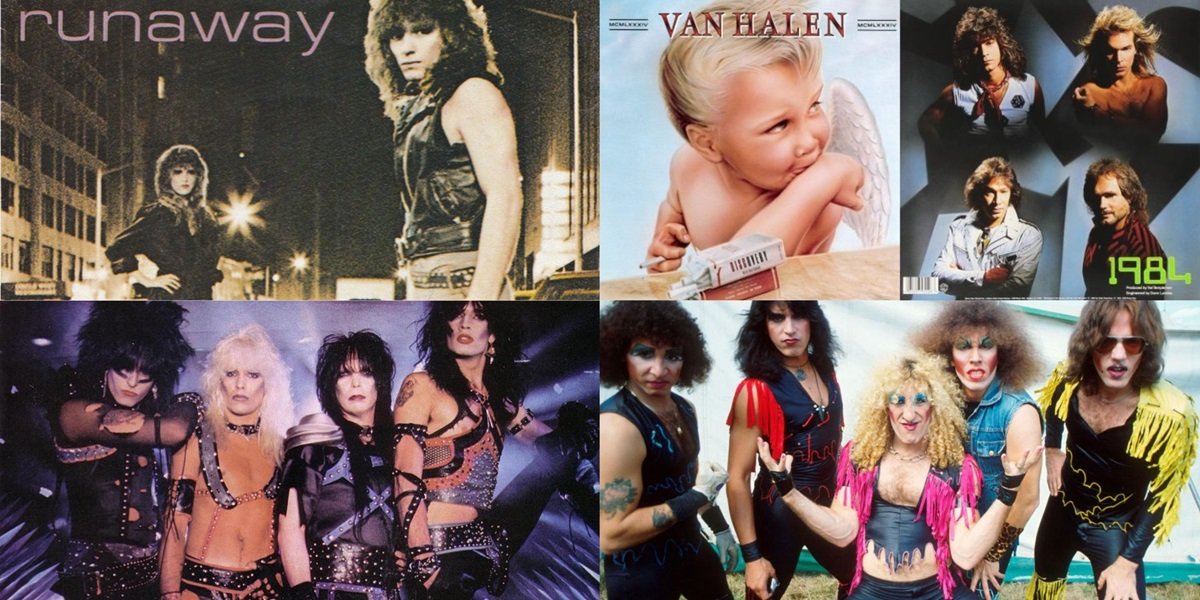
Heavy Metal had already been a thing for years before 1984. But it was during that year that the particular brand of electric guitars mixed with machismo, makeup, and lots of hair products went fully mainstream. A genre we call Hair Metal today. Mötley Crüe scored three Billboard Hot 100 hits that year from their album Shout at the Devil, causing “ Satanic Panic” prone parents to throw many of their kids’ albums away. The less-threatening Bon Jovi entered the picture in ’84, thanks to their song “Runaway.” It foreshadowed a very long run on the charts through the rest of the decade.
Meanwhile, Sunset Strip bands like W.A.S.P, Dokken, and others broke big. Twisted Sister had more makeup on than 50 drag queens, but their song “We’re Not Gonna Take It” became a rebellious teenage anthem. But it was veteran act Van Halen, whose album 1984 was, appropriately enough, the biggest rock album of 1984. Its lead single “Jump” was inescapable, and controversial, as the “meat and potatoes” rock band used synthesizers on the track, supposedly betraying their rock ethos. It didn’t matter to fans. The record sold like crazy. And other similar bands followed suit, embracing technology. Hair Metal dominated rock for the rest of the decade, until the Grunge sound of Seattle killed it in 1991. But its dominance in that decade really began in 1984.
America Gets Its Groove Back
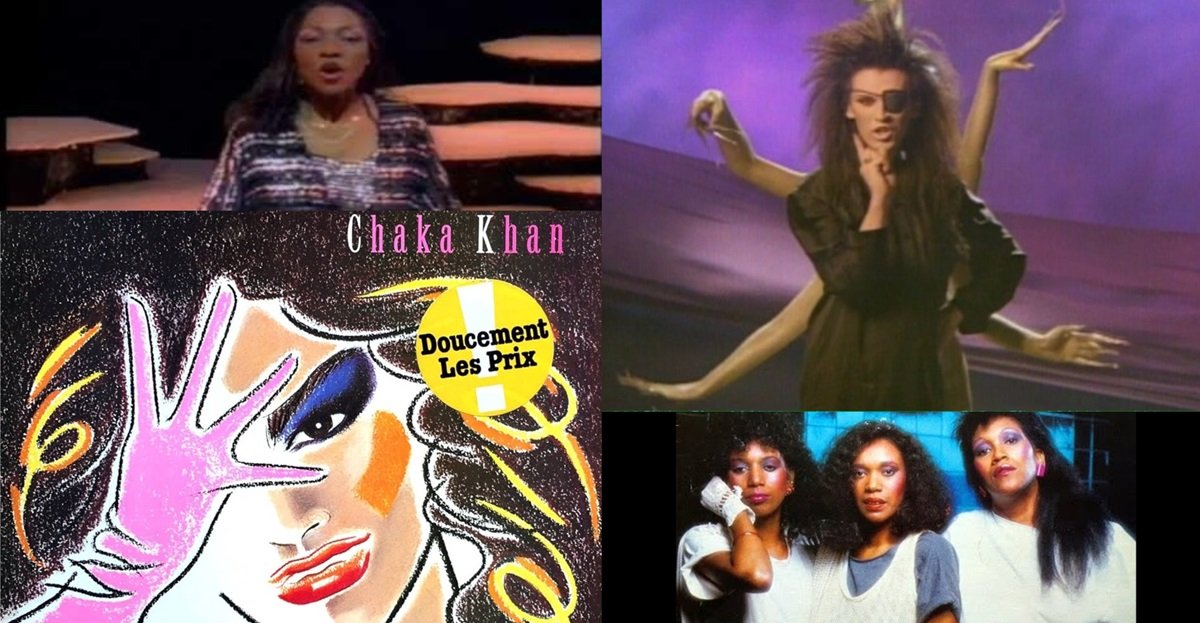
In 1979, the disco genre died a spectacular death. Frankly, it was murdered that July in the infamous “Disco Demolition Night” in Chicago, where thousands of angry (mostly white and male) rock fans rioted and destroyed hundreds of disco albums at a baseball game. “Protesting” that a genre was dominating the charts that was mostly produced by women of color and popularized in gay clubs. Disco was pulled off stations across the country, and within months, the phrase “Dead as Disco” was born. It was so dead in fact, that when MTV debuted in 1981, it was exclusively white rockers, something David Bowie famously called them out on. Radio and MTV were terrified anything “too urban” would cause their audience to revolt again.
But disco didn’t really die. It just went back underground, slowly re-emerging as just “dance music.” Hits like Rick James’ “Super Freak” happened, and Kool and the Gang and Earth, Wind, and Fire just kept pumping out jams. In Europe, disco actually never died. All this came to a head in 1984, when dance classics like Shannon’s “Let the Music Play,” Chaka Khan’s cover of Prince’s “I Feel For You,” and Ollie and Jerry’s “There’s No Stoppin’ Us” ruled radio. The Pointer Sisters had a triple whammy with “Automatic,” “Jump (For My Love),” and “Neutron Dance.” And if you still want to get ‘em out on the dance floor at an event? Put on Dead or Alive’s “You Spin Me Round.” Thanks to bangers like these and others, 1984 is the year America officially got its groove back, and got back on the dance floor.
Room for Everyone

Maybe the most pivotal thing about 1984 in popular music is that everyone was allowed on the playground. Radio and MTV playlists were populated by a huge variety of musical genres, instead of just dominated by one. There was “Dad Rock” like Billy Joel and Phil Collins on a loop, but also the previously mentioned dance hits and all that hair metal. One hit song might be really weird, like Prince’s “When Doves Cry,” another might be extremely normal (pick any Hall and Oates song). Unlike today, where it seems everything on the Top 100 sounds more or less the same. But starting in ’84, and for years after, variety was the word of the day.
No greater example of this “room for everyone” attitude in pop music in ’84 was two of its biggest stars—Cyndi Lauper and Bruce Springsteen. Cyndi Lauper’s album She’s So Unusual came out towards the latter half of the previous year. But in 1984, she scored 5 Top Ten hits with it, starting with “Girls Just Want To Have Fun,” a song we still associate with the era. Her unique voice, outrageous hair, and wild style epitomized every fashion extreme of the era. Meanwhile, Bruce Springsteen’s Born in the U.S.A. album broke records. His signature gravely vocals, and “fashion” of plain blue jeans and white t-shirts and “back to basics” rock were also wildly popular. In the end, the music of 1984 proved that pop music is best when it comes in many flavors.
All of these things made 1984 pivotal in popular music. And that’s without getting into the movie soundtrack hits (Ray Parker Jr.’s “Ghostbusters,” or Kenny Loggins’ “Footloose.”) Or the iconic one-hit-wonders like Nena’s “99 Luftballons” or Scandal’s “The Warrior.” Four decades later, it seems unlikely we’ll get a musical year as important as this one ever again. But it makes us appreciate it all even more today.

